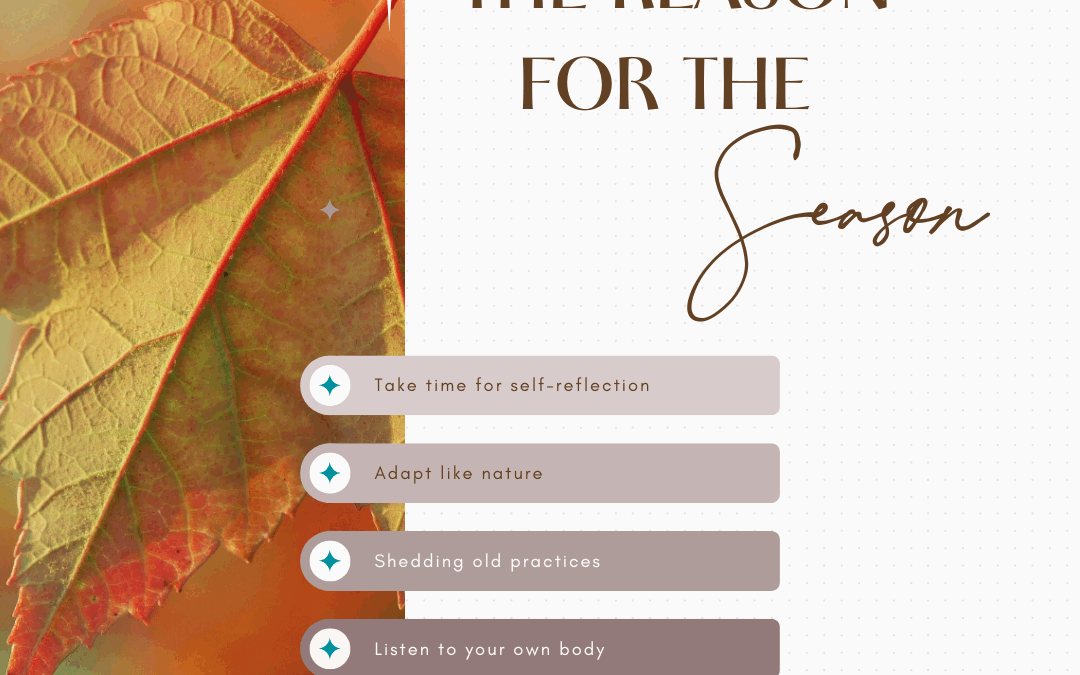Isn’t it fascinating how we begin to crave the seasons that are on the horizon? If we listen to our inner wisdom, we can see that our body and mind naturally synchronize with the changing weather patterns. I don’t know about you, but I’m already searching for fuzzy socks, comfy sweaters, and herbal teas by the fire. Fall is a time of change and transition. If you observe the autumn leaves, you see how they change colors, fall from trees, and signify the end of one season and the beginning of another.
As a leader in the nonprofit world, summer often brings a sense of urgency and high energy with longer days. Our leadership can feel strong, confident, and proactive as we work diligently during this time. However, as we transition into fall, things start to cool down and the long days get shorter. Like in years past, this season invites us to reflect on our journey and assess what has been working for our organization. It may be subtle, but take a moment and check-in. Fall is an opportunity to let go of ideas or practices that no longer serve us and allow space for new possibilities. It’s also a time to regroup, reset, and prepare for the future.
So how can you take this time of year to reflect and evaluate? What strategies are working well, and which ones need to be rethought or dismissed.
Here is a quick guide for you to ponder.
Take time for self-reflection:
What goals have you accomplished with your organization this year? What challenges have you faced? Consider reflecting on this in a journal or preparing thoughts for a meeting with your key staff.
Schedule meetings to discuss any necessary changes or ideas to move in a new or altered direction.
Adapt like nature.
How can you create an environment that encourages adaptation, like the way nature does? What opportunities or professional development can you offer to ensure continued growth and learning for your staff and organization?
Fall season might be a great time for strategic planning, staff evaluations
Shedding old practices:
Trees shed their leaves to conserve energy during the winter. Similarly, you create space for new ideas, energy, and effective tools by letting go of the old. Leaders can discard outdated ideas, patterns, or paradigms that no longer benefit the company. This process requires courage as you may encounter resistance. However, consider implementing small changes or shifts if faced with pushback.
Listen to your own body:
Choose grounding foods for nourishment, warmth, and vitality. These include earthy sweet potatoes, pumpkins, beets, almonds, sesame seeds, warming grains and soups, organic oils, ghee, and natural, high-quality sweeteners (e.g., maple syrup or raw honey). Eat with the season. When you’re unsure what will help with grounding and warmth, go to the Farmers Market. What do you see?
Reflect on what you crave during the fall season (of course, besides pumpkin pie)? Add warming spices (such as cinnamon, cumin, ginger, salt, cloves, mustard seed, black pepper, cardamom, and basil) into your cooking. These spices are good for digestion and for warming the belly.
Drinking plenty of warming liquids, such as hot water and herbal teas, helps prevent dehydration. To make fresh ginger tea, add a teaspoon of freshly grated ginger to a pint-sized thermos bottle and fill it with hot water.
So go ahead and enjoy the hayrides, hot apple cider, cinnamon scented candles and long sleeve sweatshirts and celebrate your beautiful contribution in this nonprofit world of ours.
Danielle Rottenberg, M.Ed, Ayurvedic Health Practitioner, RYT-500, LMBT


Recent Comments